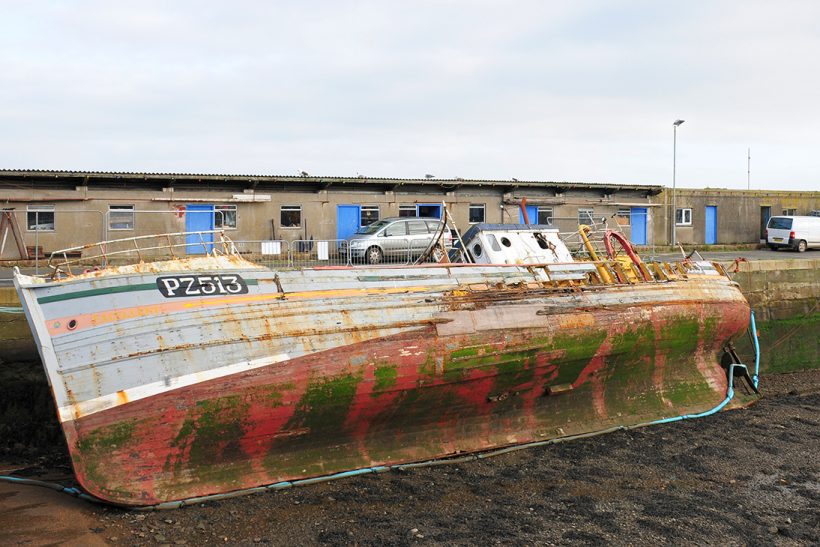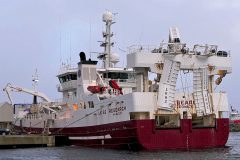Following her sinking in Newlyn harbour in mid-December, it seems as if the veteran Newlyn trawler Excellent could be nearing the end of her days unless an enthusiastic individual or group with the skills and funds to renovate her can be found, reports Martin Johns.
Above: Excellent lying in Newlyn harbour recently.
The 80ft-long wooden Excellent has been based in Newlyn since she was purchased by Newlyn trawler owners, W Stevenson & Sons in 1937.
At the time the boat was named Efficient FR 242 and had been built by J & G Forbes of Sandhaven some six years earlier for William Ritchie of Fraserburgh. She was powered by a 119kW Atomic engine supplied by Petters of Yeovil in Somerset.
When she first came to Newlyn, Efficient was used for long-lining in the summer months and then sent to Lowestoft in search of herring during the winter.
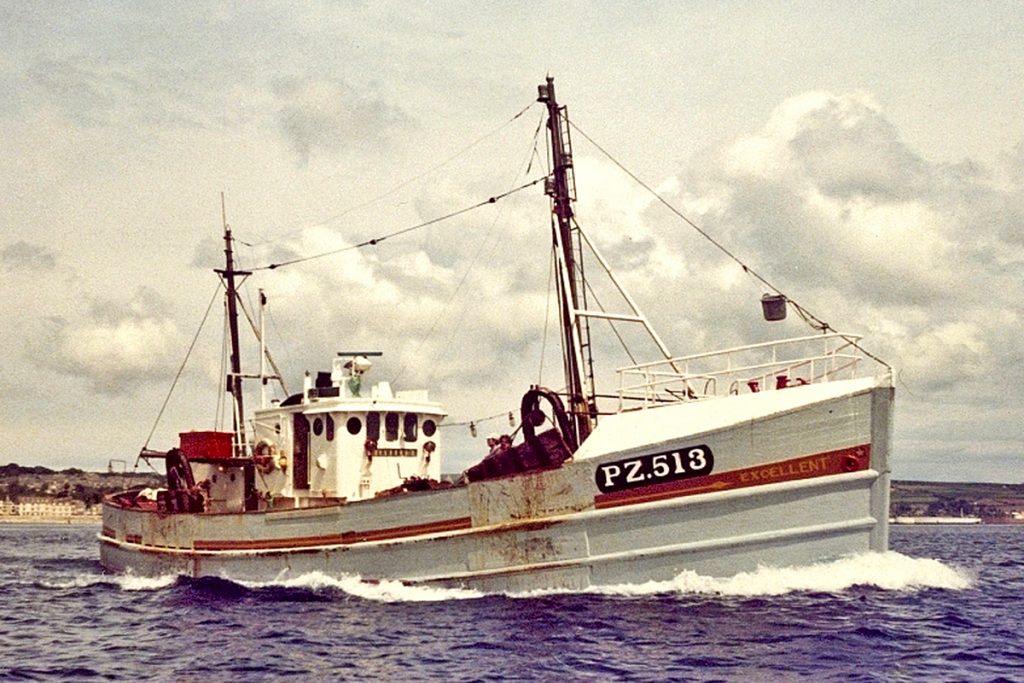
Excellent pictured in happier times when rigged for side trawling. (Photograph courtesy of the Billy Stevenson collection, cornishmemory.com)…
A year later, in 1938, Efficient was converted for trawling, skippered by Lowestoft man Joe Carr who was familiar with trawling at a time when few skippers in Cornwall had any experience of the method.
Following the outbreak of the second world war, Efficient was requisitioned by the War Department in 1941 and was used initially to ferry escapees back from Norway to Leith in Scotland.
Other covert operations, most covered by the Official Secrets Act, are thought to have been carried out by Efficient during the war years.
Following the end of the war in 1945, Efficient was handed back to W Stevenson & Sons but her main engine was found to have a broken crankshaft.
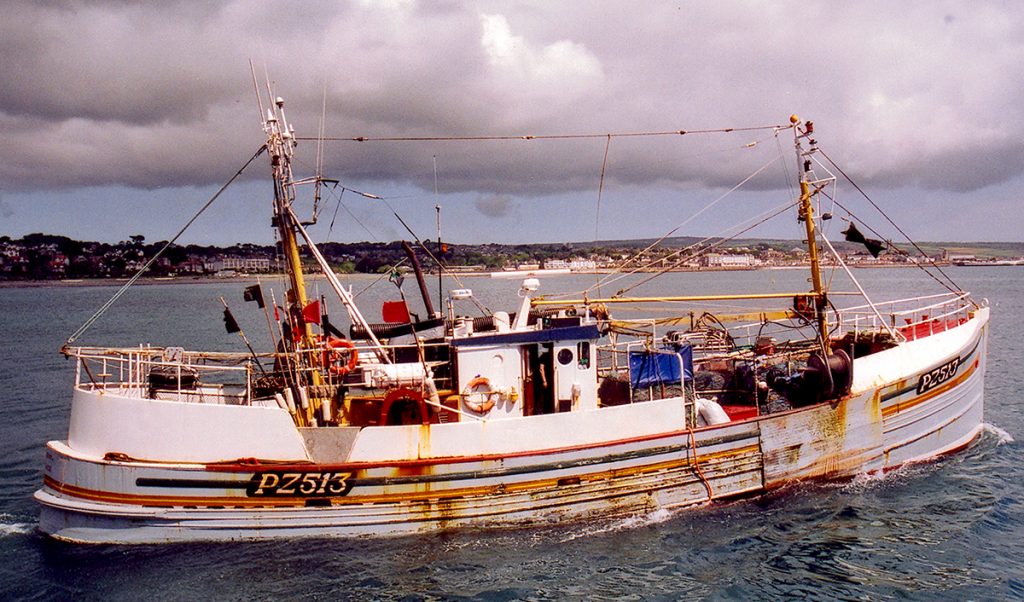
… before being converted to netting towards the end of her long fishing career at Newlyn, stretching back to 1937.
Re-fitted in Fowey with a new Lister Blackstone 119kW diesel engine Efficient was also renamed Excellent PZ 513, taking the name and number of an old sailing lugger once owned by the family. Once back in Newlyn, the newly re-fitted boat returned to her career as a side trawler, a method she was to continue with almost until she ceased fishing in 2008, save for a brief spell as a netter just prior to her retirement.
Towards the end of her career, Excellent was one of the oldest working fishing vessels in the UK and is listed in the National Historic Ships register.
In 1992, Excellent attended the Douarnenez festival for historic shipping under the command of Mervyn Mountjoy, an event that was featured in the BBC series, The Skipper.
Excellent was very much the flag ship of her owners and a photo of the boat in her prime featured on the cover of Billy Stevenson’s autobiography.
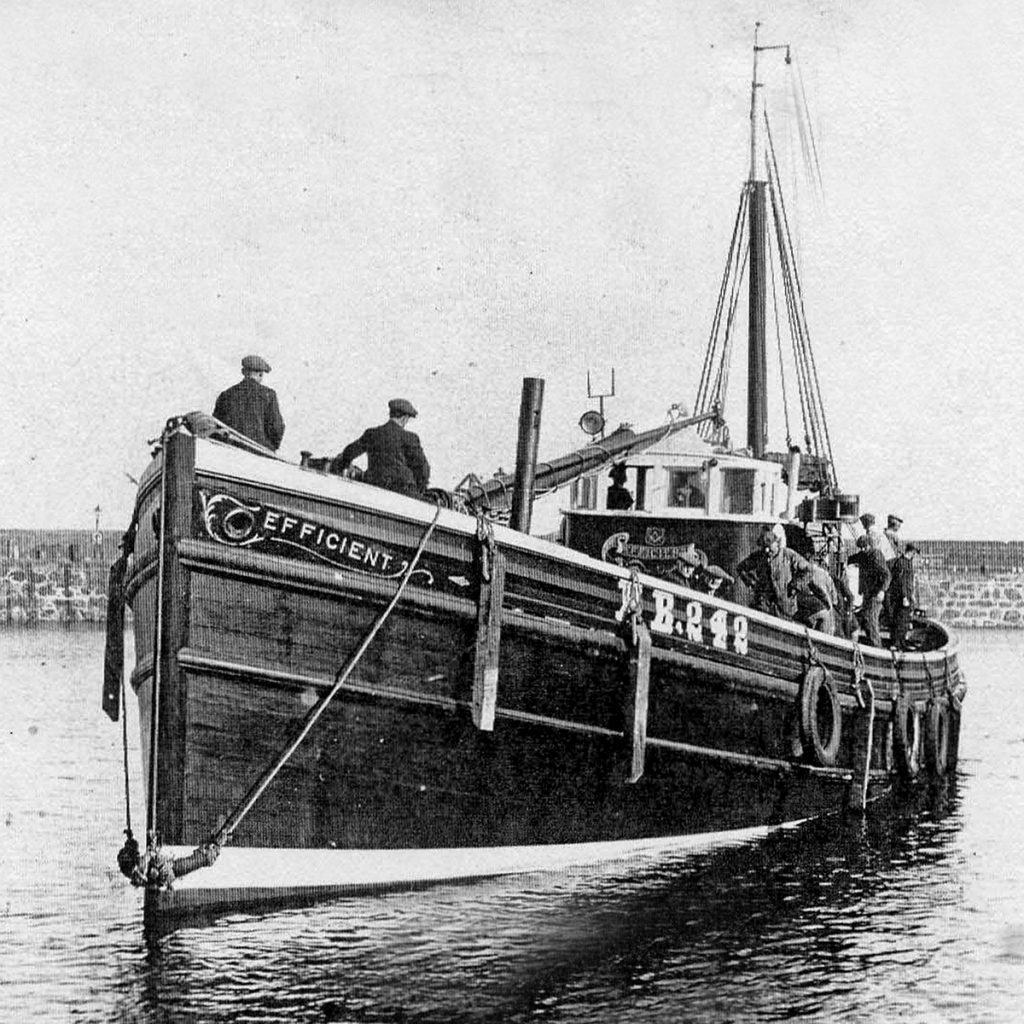
Excellent photographed shortly after she was built at Sandhaven as Efficient FR 242 (Photograph courtesy of John Addison).
Following her retirement from fishing, Excellent was laid up in Newlyn for many years before being sold by the Stevensons, who were keen that her new owner would restore and preserve the historic boat in the manner that they had maintained her for over 70 years.
However, the boat’s new owner failed to live up to expectation and she sadly sank in Newlyn last August. Once refloated Excellent was turned and towed to the end of the harbour where she sank once again on 12 December when she heeled right over onto her starboard side.
Newlyn harbour master Rob Parsons admitted that the boat may soon be broken up, saying: “While we are very sympathetic to the historical value of the boat, the harbour authority has a duty to maintain the harbour and we are now looking at breaking her up. We are, however, open to anyone who would be willing to restore her. In a perfect world we would also love to see Excellent restored.”
Richard Wemyss of Cellardyke is a trustee of the Scottish Fisheries Museum and a historian. He is very concerned that Excellent may be broken up and hopes an individual or group will come forward at the eleventh hour to save her.
Richard Wemyss said: “Excellent is not just another old fishing boat. She is pivotal at the point when the fishing fleet changed from steam to motor. This is one of the boats the modern fleet derived from.
“What could be done to save her?
“Well I think she needs a proper historical survey and from that point of knowledge a decision could be made how to proceed, especially if we can build an interest. If she could be lifted out and a cradle made to support her, long-term decisions could be made. But if she is broken up now, she is gone.”
Read more from Fishing News by heading to our news or features pages.



